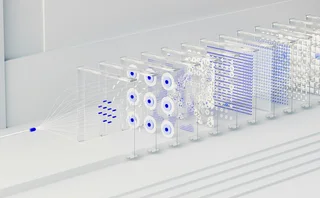AFTAs 2018: Best Compliance Initiative—Morgan Stanley

Morgan Stanley fights its way to the top of the pile in an intensively competitive category in this year’s AFTAs, winning the best compliance initiative accolade for its work around its Disclosure of Interest Regulatory Reporting.
Since its introduction in 2013, the best compliance initiative category of the AFTAs has often been an interesting litmus test for what’s been keeping people awake in the middle office during that year. The first award, for instance, was for a high-tech surveillance system at a time when much of the focus in the market was around conduct risk and market abuse, with the discussions around Dodd–Frank and the revised Markets in Financial Instruments Directive in full swing. Then, as the buy side began to feel the pinch, it shifted to the implementation of platforms designed to cope with fund management requirements under European rules.
Since then, the winners have tended to focus on specific issues or rules—such as Bank of America with its laser-eyed approach to the Department of Labor’s fiduciary rule, or JPMorgan’s Global Legal Agreements Portal. This year, that trend continues, with disclosure rules coming under the spotlight.
At the center of Morgan Stanley’s work in this space are a number of functions and engines designed to streamline, automate and generally ease compliance with disclosure rules on a global basis, with over 100 jurisdictions automated to date. Rave, the rules engines, implements aggregation rules and provides an intuitive, workflow-based approach to visualizing rules; Drama reconciles changes to rules or data with the engine, allowing users to see the impact of any amendments; Prophet provides historical context around rules; while the Hestia function plugs the holes, so to speak, by automating amendments to address data gaps. Java annotation and Graphviz are further used to link code with documentation, ensuring that linked regulations are always the most current version. All of this is displayed through a user dashboard.
Processing such a vast amount of information requires a suitably robust back-end. The processing flow, Morgan Stanley says, sits on scalable, high-end architecture, while the calculations take place on Hadoop, allowing for hundreds of millions of records to be processed “in seconds.”
The bank has also continued to invest in the platform, which utilizes the Agile methodology for development practices—and it shows in the numbers. The team delivered 150 percent more regulatory rule changes than last year, with a 50 percent time decrease for historical rule-change amendments.
Only users who have a paid subscription or are part of a corporate subscription are able to print or copy content.
To access these options, along with all other subscription benefits, please contact info@waterstechnology.com or view our subscription options here: https://subscriptions.waterstechnology.com/subscribe
You are currently unable to print this content. Please contact info@waterstechnology.com to find out more.
You are currently unable to copy this content. Please contact info@waterstechnology.com to find out more.
Copyright Infopro Digital Limited. All rights reserved.
As outlined in our terms and conditions, https://www.infopro-digital.com/terms-and-conditions/subscriptions/ (point 2.4), printing is limited to a single copy.
If you would like to purchase additional rights please email info@waterstechnology.com
Copyright Infopro Digital Limited. All rights reserved.
You may share this content using our article tools. As outlined in our terms and conditions, https://www.infopro-digital.com/terms-and-conditions/subscriptions/ (clause 2.4), an Authorised User may only make one copy of the materials for their own personal use. You must also comply with the restrictions in clause 2.5.
If you would like to purchase additional rights please email info@waterstechnology.com
More on Awards & Rankings
AFTAs 2025: Best data provider—Allvue Systems
Product: Private Credit Intelligence
AFTAs 2025: Best IT team—TCW Group
Team: TCW Group’s Investment Technology Team; Project: Engineering Solutions—ABF and insurance launches during Aladdin stabilization
Buy-Side Technology Awards 2025 winner’s interview: 73 Strings
73 Strings’ win in the BST Awards 2025 Best middle-office platform category
AFTAs 2025: Most cutting-edge IT initiative—J.P. Morgan
Project: Vida Beta One
Buy-Side Technology Awards 2025 winner’s interview: S&P Global Market Intelligence
S&P Global Market Intelligence’s success in the first year the Best private markets data provider category has been on offer.
AFTAs 2025: Most innovative third-party technology vendor (operations)—AutoRek
Company name: AutoRek



